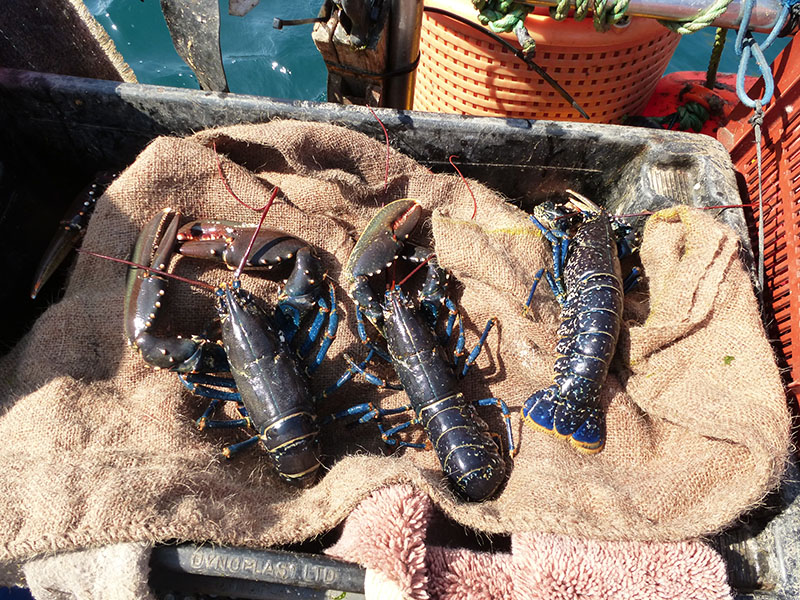Fishery
Fishery
Lobster (Homarus gammarus)
The lobster and brown crab are the biggest fisheries in terms of man power employing roughly 500 fishermen, bringing in landings worth £1,482,797 and £341,779 respectively. Potting is carried out from small vessels ~10m in size. A voluntary V-notching programme is in place, allowing fishermen to tag buried females by removing a small v shape from a tail paddle before returning them to the sea. V-notched individuals are illegal to land.
Species Ecology
Species Ecology
The European Lobster (Homarus gammarus)
The European lobster, Homarus gammarus, is a large lobster that can grow up to 1 m in length, but is more often is 60 cm. This lobster is blue on top and yellow below, with a large asymmetrical set of claws.

Habitat & Distribution
The European lobster can be found on rocky bottoms living in holes and excavated tunnels from the lower shore to depths of 60 m. These species are distributed from the eastern Atlantic Ocean, Mediterranean Sea and parts of the Black Sea. Although the European lobster is not known to migrate, they will roam to find food and typically have a home range of 2 km. Some individuals, however, have been found to move 10 km or more from their burrows. European lobsters have a varied diet which consists of crabs, molluscs, sea urchins, sea stars and polychaete worms.
Life Cycle
Female European lobsters reach sexual maturity between the ages of 5 and 7 and mating takes place between a soft-shelled female and a hard-shelled male. Spawning usually takes place in summer and the female carries the eggs on her abdomen for 9-12 months. These females are called “berried.” Once the larvae hatch and are released into the water column, they float in the surface layers and are at the mercy of the ocean currents. This period last 5-10 weeks and they feed on micro-organisms. After three moults, the body shape changes and the larvae look more like adult lobsters and adopt a life on the seabed. Once settled, the juveniles burrow in the seabed for approximately 2 years and move very little. At a carapace length of approximately 15 mm they leave their burrows and begin life as an adult.